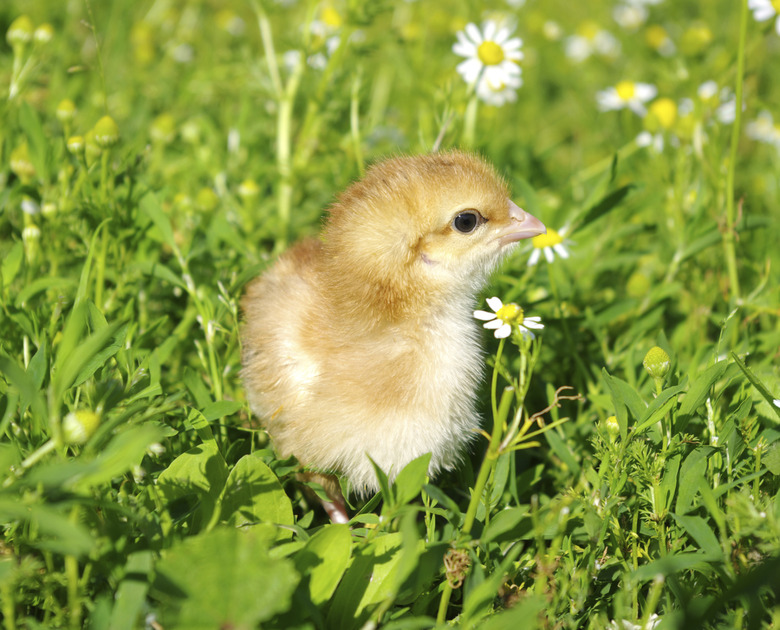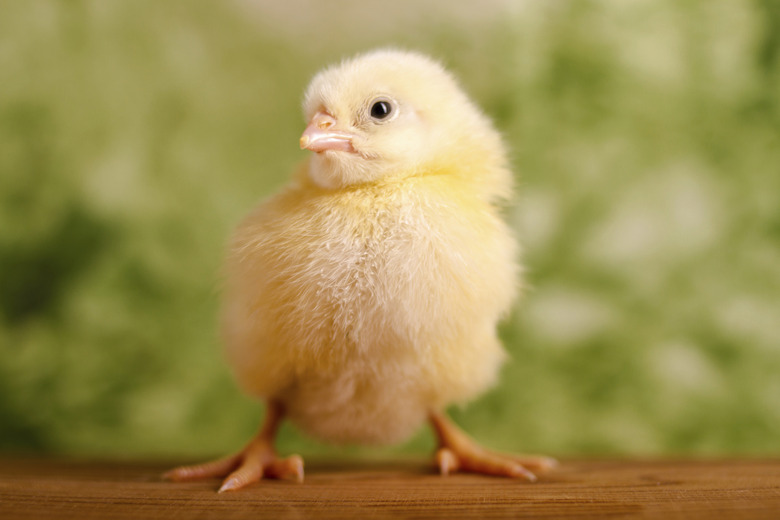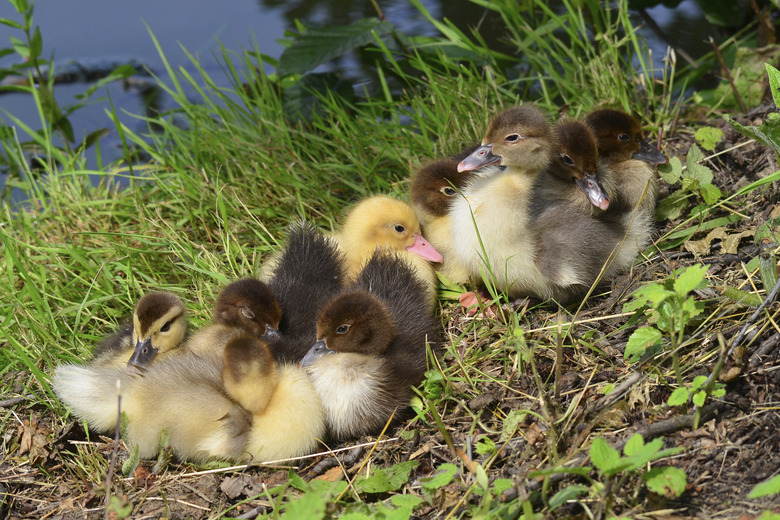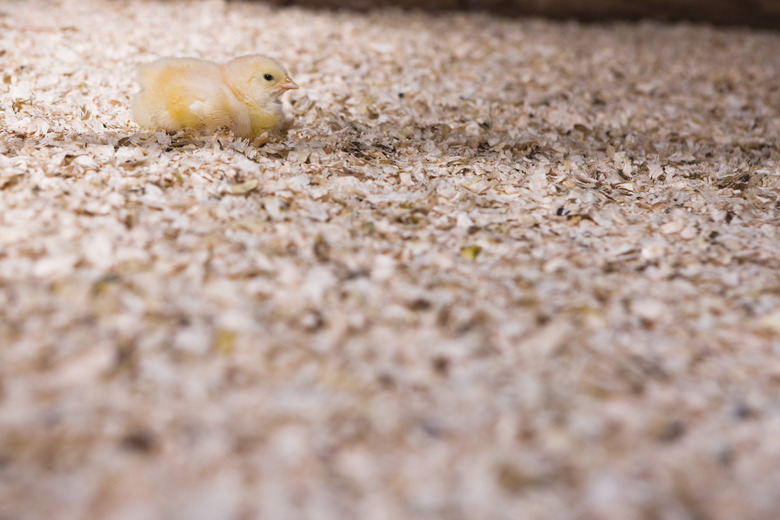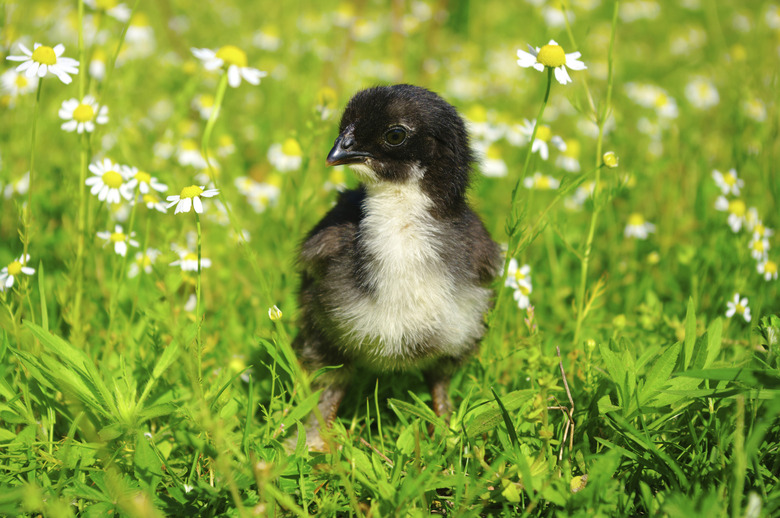How To Identify Baby Chicks
Tip
Baby chicks are their most vulnerable in their early stages and need someone that knows how to take care of them in order to survive.
Baby chicks are cute and lovable, but if you rescued or plan to raise them you will need to learn more about them. By identifying the baby chick you will be able to determine what type of bird it is and its needs including space and type of food to feed. Some chicks are more aggressive than others, needing to be separated. Identifying a baby chick requires analyzing its coloring, size, and behavior.
Step 1
Examine the coloring of the bird. When baby chicks are first born their hairs are yellow, brown, white or black. By six weeks the baby chick has most of its feathers, made up of different colors depending on what type of bird it is. For example, Rhode Island red chicks are reddish with yellow markings while leghorns are yellow. Buttercup and barnevelder chicks are brown with black markings and black ameraucana chicks are black and white.
Step 2
Analyze the appearance of the bird. Some baby chicks such as brahma and cochins have hair on their legs when they are born where most baby chicks have scaly bare skin. Some baby chicks such as leghorns have small combs, a crest of skin that stands on top of its head. Baby bantam chicks have rose-colored combs. By six weeks, the comb becomes more evident. Baby polish chicks have feathered crests.
Step 3
Look at the size of the chick. When baby chicks are first born they are as small as the palm of your hand, about 4 inches. They are also lightweight, about 2 to 3 ounces.
Step 4
Observe the chick's behavior. Baby chicks chirp, eat, drink and defecate throughout the day. Observing the baby chick will help you determine if they are limping, have diarrhea or wheezing. Wheezing or diarrhea will indicate an illness and need to be cared for immediately. Baby chicks are full of life and are always moving around. When several baby chicks are together, the smallest one can get picked on, possibly getting injured and will need to be separated from the others.
